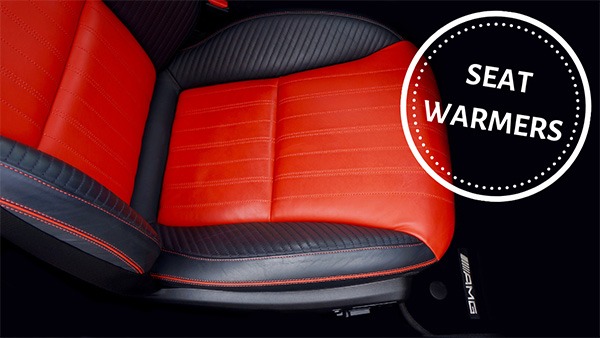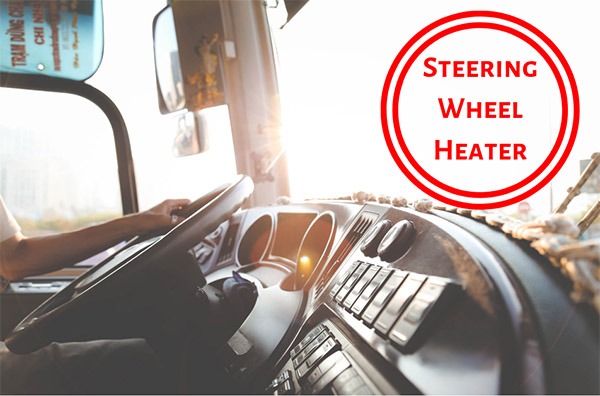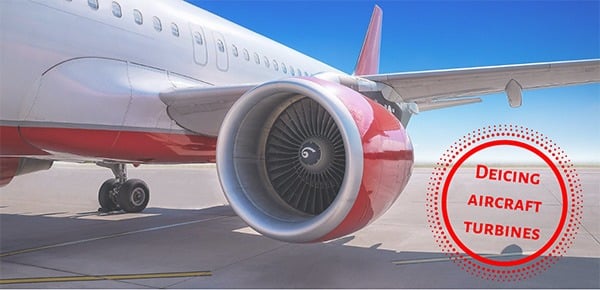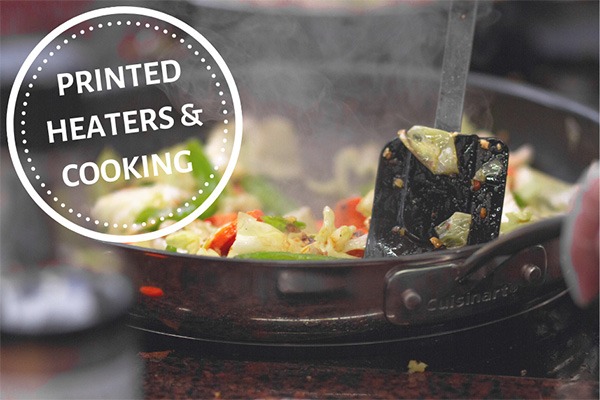What are Printed Heaters?
In simple terms, printed heaters are warming elements that are screen printed on flexible materials. Their main goal is to add heat to a product. The use of precision screen printing helps to print conductive or resistive inks onto a flexible material, including functional carbon or functional silver. By using these inks, it becomes possible to cater to unique needs or requirements for the printed heaters. There are several variations of printed heaters depending on your needs and specific operating parameters needing to be met. They can be used for several different applications such as within:
- Apparel
- Automotive
- Aerospace
- Consumer Products
- Food Service
- Healthcare Application
- Medical Application
Types of Printed Heater:
- Wire (Resistive) Flexible Printed Heaters:Wire heaters are what has been commonly used prior to the creation of printed heaters. Wire heaters have previously been used in applications such as the “old fashioned” heated blanket that everyone happens to have laying around their house. These can come off as rather bulky or inflexible, which is a negative associated with the use of wire heaters.Wire heaters tend to have limited applications and are becoming a thing of the past, especially when compared to Kapton and Positive Temperature Coefficient printed heaters
- Kapton Flexible Printed Heaters: Kapton Flexible printed heaters are a film developed heater that is commonly used in situations where a higher generation of heat may be needed. These heaters are most commonly used in aerospace applications and automotive for interior heating. Since Kapton heaters are a “film” heater, they are relatively thin and lightweight. They are used to help provide consistent heating but at much higher temperatures. Although they are self-regulating, these heaters can reach a temperature of up to 240° Celsius. Kapton heaters are ideal when it comes to industrial applications where they will be exposed to elevated temperatures. The only negative associated with these types of printers is that they need to be regulated so that they maintain a constant temperature, because the more power you supply, the hotter the heater will get.
- Positive Temperature Coefficient (PTC) Flexible Printed Heaters: Positive Temperature Coefficient heaters are most commonly used in clothing and wearables, generally because they are well known for their safety, elasticity, stretchability, and flexibility. PTC heaters have a maximum fixed temperature which produces a comfortable, but the safe, level of heat. PTC heaters are self-regulating, meaning they are capable of maintaining their temperature without any controls or outside interference. It is self-regulating because when power is applied to the heater, the resistance goes up and limits the electrical current being given to the heater. This causes the heater to cool. However, as the PTC heater cools down, the electrical current will increase again, causing the heater to reach its highest operating temperature, then starting the cycle over again.
Printed Heaters and Their Use in the Automotive Application:
Printed heaters can be used in the automotive industry, construction equipment, tractors, and so much more. Within a car, a printed heater can take on several different functions. In fact, they could eventually help to eliminate the use of the heating cores in most vehicles altogether. It also would be eliminating the need for electronic controls because the heaters self-regulate, meaning they can heat to their designed threshold and maintain that temperature. Imagine each passenger within a vehicle being able to regulate their temperature individually. This is an option that printed heaters can provide rather than heating the entire vehicle to the same temperature, ensuring that everyone can choose their own heat setting individually.
Fun Fact: The standard car produces its heat from the heated air that is being forced out of the engine. However, electric cars don’t produce any heat due to the electricity that powers the car, thus these vehicles need to find another source of heat. For electric vehicles, they must find a lightweight source of heat, because the heavier the heating core is, the quicker the vehicle will lose its battery!
The moral of the story is, by simply using PTC or Kapton printed heaters, these electric-powered cars would be much more energy-efficient and would be able to travel further distances on the same power charge.
These printed heaters can take on several different functions within your car. For example, printed heaters could be used within your vehicle as a seat warmer, a steering wheel warmer, a window defroster, or just simply as a personal heater throughout the car.

Seat Warmers: Have you ever heard of the seat warmers in your car causing “seat burns”? This is because the seat warmers are run by a wire heater, leading to the chance that the heater could overheat, malfunction, or even catch fire. However, with PTC heaters, they are self-regulating, meaning that the material acts as its own sensor. This eliminates any, and all, risk of overheating. The best part of using a PTC as your seat warmer is the fact that PTC heaters provide uniform heating, meaning there is an even distribution of the heat being given off. To learn more about how wired heaters can cause issues in seat warmers, click here!
Steering Wheel Warmer: Are you sick of attempting to drive your car when the steering wheel is ice-cold? Well by using a PTC heater on your steering wheel, you’ll never have to experience that issue again. With the fact that PTC heaters have a faster “time-to-temperature- ratio, the steering wheel will be heated up by the time you’re ready to take off.

Defroster: The printed heaters can ensure that you never have a wait time for your car to defrost in the morning. By using printed heater within your vehicle, it will maintain a constant temperature, eliminating the wait when it comes to defrosting your car.
Floorboard Warmer: Printed heaters can also be placed in the floorboards of a car so that the car can always maintain its internal temperature. These heaters can be used as a substitution to the heating core oftentimes found in cars. Not only are they safer, but they are more durable and lightweight, which is easier on the car.
Personal Heater: Printed heaters are an awesome alternative to the heating cores that are used in most vehicles today. What if it were possible to regulate your temperature individually rather than having to heat the entire car? Printed heaters can give every passenger within the vehicle the capability of regulating the temperature to whatever heat setting that they prefer.
Printed Heaters and Their Use in Construction Automotives:
However, printed heaters aren’t only able to be used in cars. Printed heaters would be ideal in the construction setting because they could be used on equipment such as tractors, cranes, bulldozers, and so on.
When it comes to a construction site, the equipment being used, such as the cranes, bulldozers, tools, etc., will likely be left there for the job’s entirety. It is no mystery that during the winter months, the equipment can oftentimes become frozen. This is just one of the many opportunities where the printed heaters can come into play. These printed heaters can quickly defrost the equipment. Not only are the printed heaters capable of defrosting the safety equipment, but they can also be used as a form of personal heating within the equipment while operating the safety equipment. For instance, a PTC heater could be placed within a piece of equipment such as a crane, bulldozer, etc., so that when it is in use, the person working the equipment will have a form of personal heating while doing so.
Construction workers are oftentimes exposed to frigid temperatures, which is why construction sites tend to use “temporary space heaters”. The issue with temporary heaters is that if they are not operated correctly, they can pose a significant threat of fire. This could place a threat on not only the construction site in general but also cause potential harm to employees as well. This is where we believe printed heaters can be a better alternative. They can reach a high-temperature index while also self-regulating the heat being given off.
When power is applied, the printed carbon heats up and expands. The electrical resistance increases and limits the current to the heater causing it to cool. As the heater cools, electrical current will increase again causing it to reach its operating temperature. This process means that the printed heater is self-regulating. This creates a safe and efficient warming element while also eliminating the risk of overheating while producing the necessary heat for the site and the employees.
Printed heaters could also be placed onto batteries within a construction site to ensure that the batteries are kept at a warm internal temperature. This would ensure that the battery remains operational throughout the time spent at the construction site so that the workers can remain productive throughout the day. With regards to the workers themselves, these printed heaters can be inserted in the construction workers clothing articles such as within their coat, hard hats, gloves, and anything else you could think of. By placing these printers into the clothing articles of the workers, it would ensure that they remain warm and active during their time spent at the construction site. When it comes to printed heaters, the usage possibilities are endless!
Printed Heaters and Their Use in Aerospace or Aeronautical Application:
When it comes to aerospace, it is no surprise that a lot of heat energy is required, especially with all the temperature extremes. Reduced weight is oftentimes a must, which is just one of the many reasons that a Kapton heater should be used in place of a normal heater core. An excess of heat is oftentimes needed when it comes to maintaining the temperature of the airplane, the turbines, and everything else that can be involved. What if there was an easier way? With the use of the Kapton heater, airplanes will never need to spend their time worrying about deicing the planes surface or the turbines. The Kapton heater will help the plane’s exterior to maintain a warm temperature evading all issues of defrosting throughout the plane’s trip.

While the Kapton heaters can be used to help maintain the external temperature in aerospace, the PTC heaters can be used to maintain the temperature internally. Oftentimes, electrical components of the craft will need some sort of heat source in order to maintain their temperature in the aerospace’s atmosphere, which is an instance where the PTC heaters could come into play. The PTC heaters could be used in several aspects within the plane to maintain its internal temperature. Examples of this could be as a seat warmer (as discussed previously in the automotive section), on the floorboards, as a personal heating source, or as a precaution to save more time while defrosting the aircraft. To learn more about why it is necessary to preheat aircraft engines, click here!

Another unique task that the printed heater could be used for is the defogging of camera lenses. Oftentimes, especially in the aerospace field, cameras are constantly in use. With the use of the printed heater, it can ensure that the camera lenses don’t fog up, causing you to miss a “snapshot” of anything. There are so many unique features that printed heaters can be used for, and the uses are endless with them.
Did you know that Kapton heaters can be used as a heat source when cooking? With no flames, there is a safety element included in its use. Kapton heaters can heat up to 240° C, so there will be no shortage of heat when it comes to cooking on an aircraft. This is just one of the unique features that the Kapton heaters could be used for!

Of course, an internal heater is also going to be needed when it comes to maintaining the temperature of the aircraft’s engine. With the temperature extremes, extraordinary precaution must be taken to ensure the aircraft sustains its internal temperature, especially within its engine. This is just another instance where printed heaters can make an impact.
Printed heaters can have several benefits within the automotive and aerospace industries. They can be used as:
- Seat Warmers
- Steering Wheel Warmer
- Defroster
- Floorboard Warmer
- Personal Heater
- Apparel
- Heat source to cook
- Space Heater
There are thousands of possibilities when it comes to ways that printed heaters can be used within our everyday lives. Printed heaters, although not very commonly known, are a big aspect of the automotive and aerospace field. They are only bound for further use and success in the future. Don’t believe us? Just wait and see!
If you’re interested in pursuing a project with our BTI Team, click here!
 Meet the Author: Jaclyn King
Meet the Author: Jaclyn King
Jaclyn is a Digital Marketing Specialist on the BTI Team. Her main job responsibilities involve inbound marketing, content creation, and social media management. To get to know more about Jaclyn, check her out on LinkedIn!